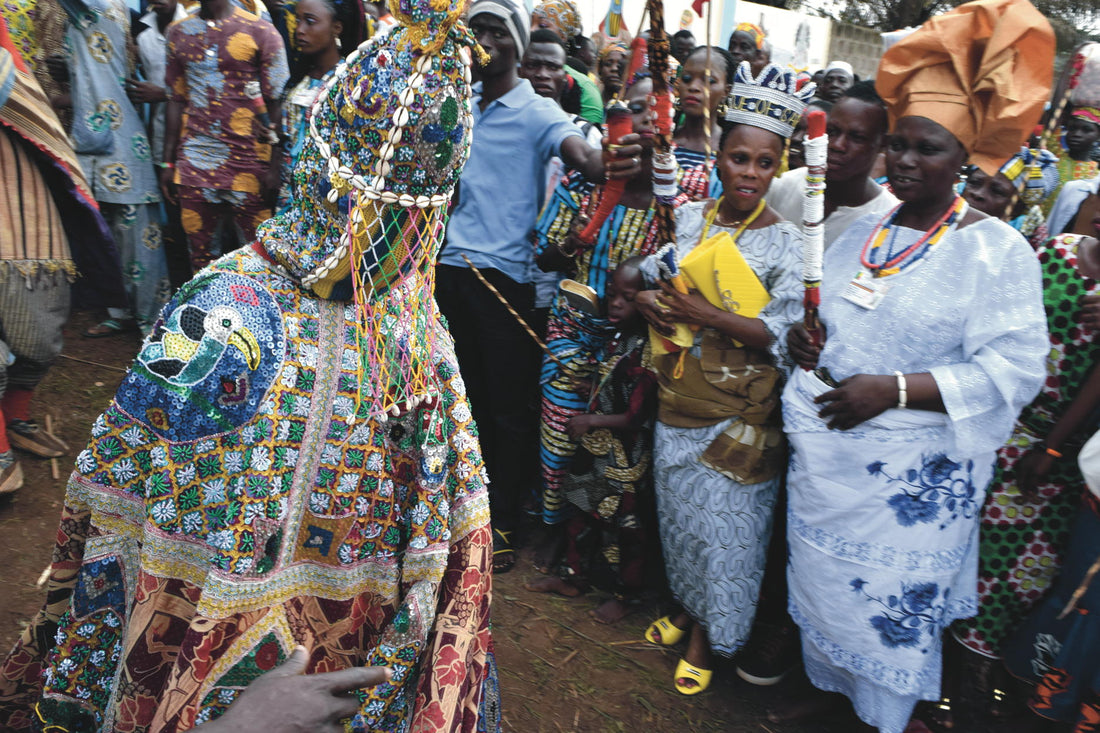First published: Autumn 2022
The costumes that the Yoruba people of West Africa create for their Egungun festivals are sacred, symbolic and ever-changing
The dusty Yoruba town of Sakete cannot even be found on many maps of Benin in West Africa. North of the country’s capital, Porto Novo, and not far from the Nigerian border, it has a population of around 12,000. The town has pleasant trees and greenery, as well as rubbish-strewn byways and maze-like streets dotted with open areas for socialising and events.

The costume of Egungun Sanhuh. All photos: Michael Landau, 2017
The Yoruba are one of the most populous ethnic groups in Africa. Their culture is evolving rapidly, but also conserves many of its ancient traditions and religious rituals. One of these is the Egungun festival of Sakete which members of the Egungun – a traditional Yoruba society – celebrate every three years. The festival opens with a ceremony in which significant community figures go onto the streets to perform the task of overcoming evil spirits and thereby freeing the eigou – spirits of the ancestors – to enter our world in the form of hundreds of living Egungun (trance entities), under the guidance of Ifa, the Yoruba oracle. The next day, 400 types of Egungun emerge from all over Benin, each unidentifiable in a unique, ornate, full-body costume.

Egungun twins wear identical costumes
For the next 16 days, from early afternoon to dusk, the Egungun wander the Sakete streets, each with a retinue of drumming, singing and dancing attendants. Ritual mass parades, and displays of dance and mystic powers are held for large crowds of spectators. The Egungun bestow blessings and mystical knowledge – in return for small donations – but many are also aggressive, chasing and whipping “sinful” spectators with thin branches. Most Egungun are guided by a minder using a wand with which they also restrain violent behaviour.

Egungun wander the streets either chastising crowd members or bestowing blessings
The humans animating the Egungun are all males and mostly adults. They speak in a strangled semi-falsetto which, along with their head-to-toe costume, disguises their identity. The spectators seem to suspend disbelief – they know in some sense that humans in trance are inside the costumes, but in practice this is ignored and the Egungun are considered as fully divine.
By MICHAEL LANDAU
This is an article extract; read the full article in Raw Vision #112




